Overview:
This document describes the parameters affecting a multi-clock employee. The Multi-Clock function is only available for use via the WORKSHOP tab within OPTO and not for the Web based clocking.
To Setup
From the OPTO ribbon, select the RESOURCES tab then click the arrow icon in the bottom right (circled below) to access the Clock parameters.

Click on the ‘Multi Clock’ tab. Calculated job time can either be by Job Quantity or Estimated Time.
- Job Quantity is best suited to continuous or repetitive production workflow.
- Estimated Time is best suited to intermittent or machine shop production.
For this example, the estimated time of a process cannot be zero as OPTO will divide clocked time by a ratio created from the estimated times of each process. Press <F9> to save settings. The USER should tick Use Setup Time if any of the workcenters do not use process time.
E.g. programming, this will add the setup time to the total process time in the ratio calculation.
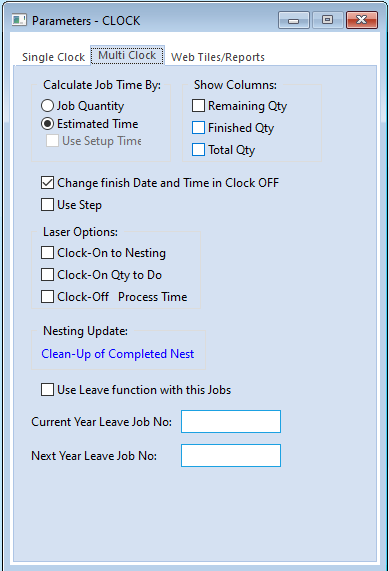
Scenario 1 – Employee Multi On Only / Multi On & Off box Must be just Ticked
From the ribbon, select the ‘Resources’ tab and click the (1) ‘New/Edit Employee’ icon to display the Employee Details window. From this tab also click on the (2) to display the ‘New/Edit Workcenter’ icon to display the Workcenter window.

Clock On Multi to Multiple Jobs – Clock Off Single Only
- On the ‘Employee Details’ window make sure the Multi On Only / Multi On & Off box is just a grey tick.

- On the ‘Workcenter Details’ window make sure the Consecutive Multi Jobs box is ticked.
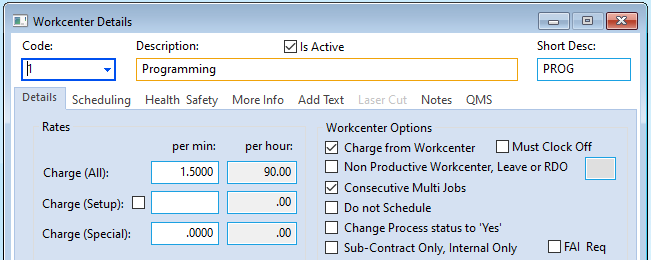
Option 1A – If the Workcenter Consecutive Multi Jobs box is ticked, then at job finish only the job that is selected will be finished. Time will start again and only be recorded for the job that is next on the finish job window.
This is suitable for a workcenter that can have a number of jobs started at the same time (queued) and as each job is completed a clock off is all that is required to start clocking the next job.

Option 1B – If the Workcenter Consecutive Multi Jobs box is not ticked then the time is recorded against all jobs from job start and it is only the selected job at job finish that has its time stopped. All other jobs will continue to have time recorded until they are finished.
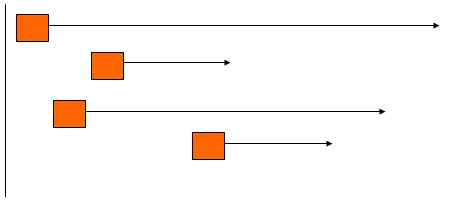 This is best suited to employees that can operate a number of machines at the same time (lathe and a CNC machine). They can clock on and off jobs independently and the start time and finish time is recorded for each job.
This is best suited to employees that can operate a number of machines at the same time (lathe and a CNC machine). They can clock on and off jobs independently and the start time and finish time is recorded for each job.
Scenario 2 – Employee Multi on Only / Multi On & Off box Must be Ticked
Clock On Multi to Multiple Jobs – Clock Off ALL Job in one go.
- On the ‘Employee Details’ window, make sure the Multi On Only / Multi On & Off box is ticked.

- On the ‘Workcenter Details’ window, make sure the Consecutive Multi Jobs box is un-ticked.
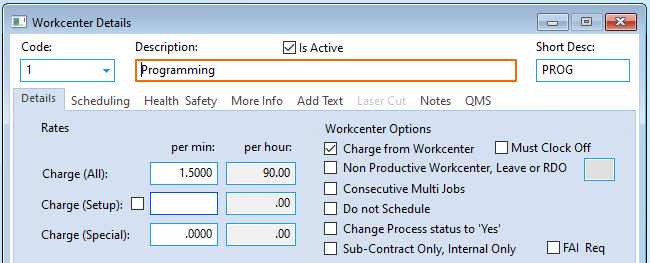
Option 2A – If quantities are required to be recorded by operators at the job finish function, then the Multi Clock parameter should be ticked as QTY. Operators must enter quantities for the times to be calculated correctly. The recorded times are apportioned based on the qty entered and the estimated time in the process.
Option 2B – If quantities are not required to be recorded, and the operator only needs to finish all jobs at the same time.
Time is apportioned amongst the jobs based on the remaining estimated time of the job. Therefore, this option will only work if there is estimated setup and process time or both on the job ticket.
This is best suited to employees that have a number of jobs that all start and finish at the same time, like spray painting.
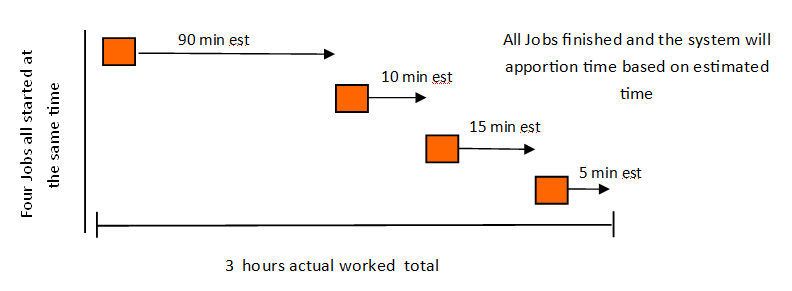
In the example above the 2 hours total estimated time actually took 3 hours total so the system will apply time as 90 mins estimated = 120 mins actual, 10 mins estimated = 15 mins actual and so on which will add up to a total of 3 hours
In all cases of Multi-clock off operations, each job qty OR status must be updated for the program to complete an employee clock off.
Opto Software Pty Ltd Last Reviewed: 24/04/2024
